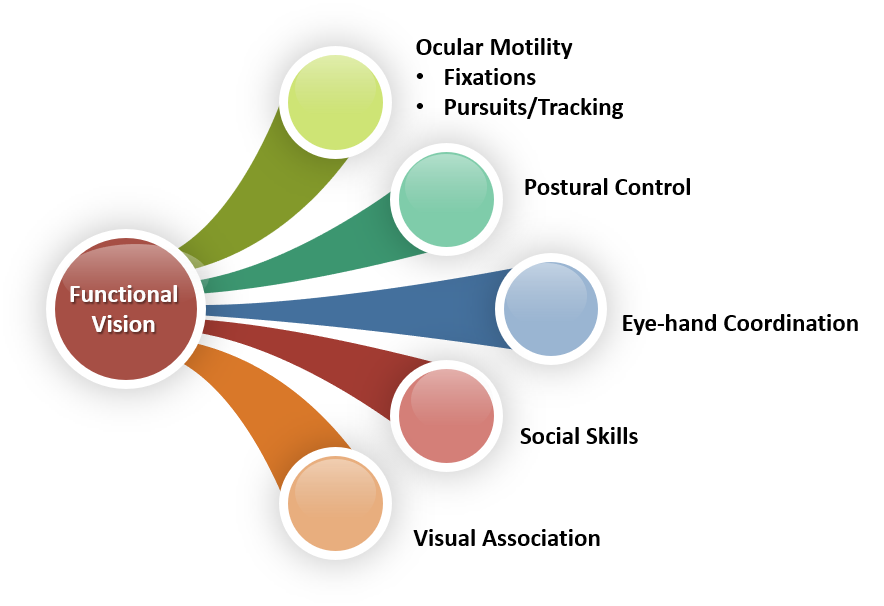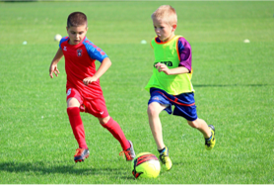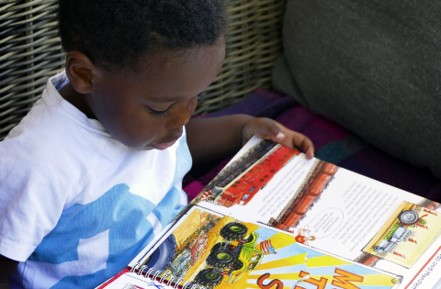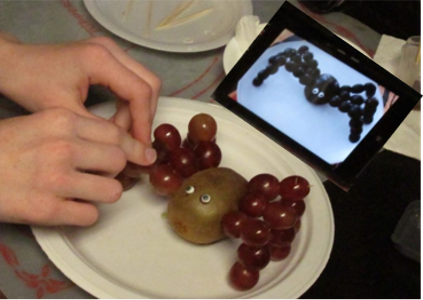
Concepts explored in this post:
- Functional Vision: Integrating vision with motor skills and language
- Dorsal Stream – integrating vision with motor skills
- Ventral Stream – integrating vision with language skills
- Ocular Motility: Coordinating movements of the eyeballs
- Fixations, Visual Tracking, Visual Pursuits
- Visual Association: Motor free visual perceptual skills impacting
- Social skills
- Visual discrimination (i.e., letters, numbers)
Children with Sensory Processing Disorders (SPD) often have difficulty with visual perceptual skills due to the nature of the disability. Visual perception skills or “Functional Vision” refers to the ability to use seeable information in visually related daily tasks such as reading, walking, recognizing people, and how objects are used. Functional Vision requires the ability to bring movement of the eyes together with language skills in order to understand how daily activities are accomplished.
There are two major bundles or pathways that carry information from the eyes to the rest of the brain. One of these pathways is called the dorsal stream. Pathways of the dorsal stream help to integrate movement of the eyeballs with motor skills. The other major pathway that carries information from the eyes to the rest of the brain is called the ventral stream. Pathways of the ventral stream carry information relating to an objects’ appearance (i.e., size, shape, color) from the eyes to the language centers of the brain.
Vision and Ocular Motility
Many children with SPD have difficulty integrating visual skills with motor output. This is caused in part by the need to team, pair, or coordinate tension of the muscles that move the eyeballs. The motor skills of combining the moves of the eyeballs is referred to as “ocular motility”.
Two basic steps are involved in ocular motility.
- The first step involves selection of a target to watch. This step is called “Visual Fixation” and requires attention to holding muscles of both eyes in a steady pattern of visual gaze. Children who have issues with attention often have trouble with this step.
- The second step involved with ocular motility generally requires the ability to keep track of a moving object. “Visual Pursuits” or “Tracking” are terms that refer to coordinating muscle actions of both eyes as needed to follow a moving target. Children who have issues with coordination often have trouble with this step.
Examples of Ocular Motility at Work

The girl who is up at bat in this photo is depending upon coordinated work of eye muscles to position her body as she uses visual fixation to direct her eye gaze upon home plate. Meanwhile, she uses vision to confirm the posture of her legs and trunk as she positions her body to face home plate. She is also relying upon visual fixations to position her bat correctly while she turns her head to maintain her eye-gaze on the ball. She is using visual pursuits to watch the moving baseball, judging its speed and distance as the ball advances toward her.
Children who have SPD often have difficulty positioning their bodies in relation to objects in the environment.

These two boys who are running down the soccer field in this photo are depending upon components of ocular motility to guide their play. They are using visual fixations to keep their eyes on the ball. These boys are also using visual pursuits to maintain awareness of each other as they move along in order to avoid collisions. Meanwhile they manage to integrate moves of their legs and feet while they pursue the ball so they can kick it towards the goal.
Children who have SPD frequently have difficulty integrating movements of their bodies while they visually pursue a moving target.

Reading is an essential outcome of ocular motility that relates to success in many classroom activities. As shown in this photo of a young girl, the eyes alternately perform “fixations” to select a letter or word, and then “visually pursue” the visual stream so that reading occurs. Handwriting is another outcome of ocular motility that is needed in many aspects of school. When the muscles of the eyes work together to guide movements of the fingers as shown in this photo, handwriting occurs. Reading and writing are examples of fine motor skills that are frequently impacted in children who have Sensory Processing Disorders.
These examples of ocular motility show some of the work accomplished by the pathways of the dorsal stream as they impact motor skills. These pathways do not work by themselves, but instead work together to enhance positioning of body parts for postures needed for specific activities. Pathways within the dorsal stream also act to guide eye muscles to visually pursue moving targets as activities unfold.
Visual Association
Visual association is an outcome of the actions of the ventral stream of fibers that emerge from the eyes and pass throughout the brain to impact language skills. Functions of the ventral stream typically address three questions related to an image or an object: 1) “what is it?” 2)“where does it go,?” and 3) “what do I do with it?” Children who have Sensory Processing Disorders also often have difficulty selecting words and associating these ideas to express themselves appropriately. For example, stimulation of these regions of the brain can result in the ability to see a friendly face, link the image of the face with the name of the person, and remember how to relate to one another.
Examples of Visual Association Skills at Work

These two preschoolers are looking into a pond and preparing to reach for something that has captured their interest. What they do with what they have found will be based largely upon integration of vision with language skills. They soon discover what it is that they’re looking at, where it usually goes, and what the object tends to be used for.

This photo gives an example of the ventral stream of vision at work in preparing this child for reading readiness. The images in the book have been carefully selected by the artist to prompt questions about the objects. As the boy looks at the pages and gazes at the objects, questions come to mind including, what are these images about, where do the objects go, and what should be done with them?

Functional vision, as shown in this photo, often requires integration of visual input with a either a motor or language response. However, many activities require both types of responses. For example, the food craft activity shown in this photo unites both types of visual response. As the girl looks at the image on the iPad showing the spider she will be making from grapes and kiwi fruit, visual fixations and visual association skills are needed. As she uses her fingers to push the grapes onto toothpicks, visual tracking skills are needed to position the grapes onto the toothpicks used for the spider’s legs.
Research has shown that when children have medical conditions such as Sensory Processing Disorders, ADHD, or Developmental Coordination Disorder, the fibers of visual pathways sometimes lose their sense of direction and signal strength.
Remedial programs for deficits in functional vision behavior are generally guided by an Occupational Therapist or an Ophthalmologist who specializes in working with children who have developmental conditions of the eyes.
For more information take a look at our post on visual sequencing or this website with fun eye exercises for children.

Comments are closed.